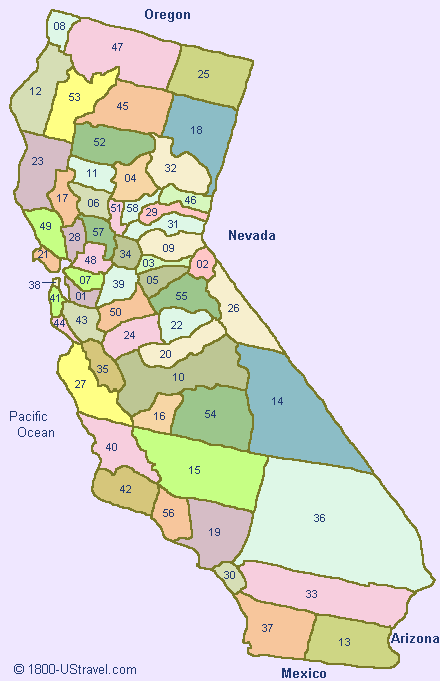
Curious to know how many counties California actually get more info has? You’re not alone. From trivia nights to travel planning, the answer—58—comes up again and again, butthat short answeris just the first layer of a deeper tale.
This network of counties makes upa tapestry of extremes: surf-washed beach cities, snow-capped alpine districts, vast agricultural heartlands, and thriving tech metropolises. Each county carries its own story, shaped byimmigration waves, promising new industries, and ever-changing demographics.
In the sections ahead, we’ll dig intothe timeline that locked the total at 58, the services counties deliver day-to-day, and the outliers that set fascinating records. When we’re done, you’ll own the knowledge—and map your next California adventure with confidence.
How the Golden State Reached 58 Counties
On statehood day in 1850, the map contained barely half the jurisdictions we know now. An unprecedented population boom forced lawmakers to redraw borders. Within twenty years, the count had risen to 53 counties, and that same year the remaining gaps were closed, cementing the now-famous tally of 5 8.
Capitol archives indicate that fresh jurisdictions sprang out of three major pressures:
- Hundreds of rugged miles turned routine business into week-long trips.
- Economic clashes pitting ranchers against merchants triggered secession campaigns.
- Language and immigrant communities demanded tailored governance.
By 1920, the political map hardened. Today, even bold secession schemes rarely get ballot traction, prompting analysts to call the era of county creation a finished chapter.
From Kelp Forests to High Deserts: County Geography
Imagine a line from the Smith River watershed to border-side Calexico, and you’ll traverse a climatic kaleidoscope. Ocean-brushed jurisdictions benefit from marine layers and mild winters, while interior giants like San Bernardino or Kern battle drought cycles.
- Mountain counties such as Mono, Mariposa, and Calaveras receive winter snows.
- Sacramento–San Joaquin fringe counties balance peat islands and orchards.
- Island counties like Ventura license film crews on beaches.
This breadth clarifies how water rights, zoning, and ag yields diverge so sharply. Climate, after all, shapes crops and careers.
County Government and Core Services
Amid Sacramento’s delegated framework, municipalities handle zoning, but county boards oversee vital “unseen” duties that keep daily life humming. Cradle-to-grave—vital records, coroner reports, property deeds—all reside at the recorder-assessor’s office.
Sheriff’s departments patrol towns too small for police forces, while county benches hear civil suits. Social-services bureaus distribute food assistance. Budget battles occur in monthly Board of Supervisors sessions.
Case Study: Tiny Alpine County
Tiny Alpine operates from a single two-story courthouse, illustrating how flexible county structures can be. One template doesn’t fit all when budgets span five figures to double-digit billions.
In the end, these 58 mini-capitols act as middle managers between Capitol and curbside. Understanding their remit guides newcomers navigating paperwork.
Demographic and Fiscal Highlights
California houses over thirty-nine million people, but that population collects in dramatic clumps. LA’s single jurisdiction hosts more than one resident in four. On the flip side, high-elevation Alpine hovers around a thousand residents.
- Largest population: Los Angeles
- Fewest people: Alpine
- Largest area: San Bernardino
- Smallest area: City & County of SF
Fiscal bandwidth mirrors population spread. South Bay enclaves report six-figure median incomes, while Central Valley breadbaskets depend on seasonal labour influxes. This revenue gap drive school funding debates every decade.
Tracking each superlative pays dividends: county borders redraw home-buying budgets and business licences.
Touching All Counties in One Journey
County-collecting hobbyists, bagging all 58 jurisdictions ranks as a top geo-challenge. One ambitious loop sets out in San Diego, rolls up the Pacific Coast Highway, swings through Monterey, then cuts a diagonal across nut groves and tomato fields, before climbing into the high Sierra for ghost towns and mining museums.
Regional Mini-Loops
- Coastal Kick-off – Mission trail coast; a baker’s dozen of stops in four days.
- Crop-Belt Drive – Ventura to Sacramento; flat-land express.
- Lava Beds Detour – mountain lakes and volcano cones; jaw-dropping vistas.
Finish the circuit in El Centro, with quadruple-digit odometer gains. After that, you can confidently claim you know “how many counties California has”—because you’ve seen them all!
FAQ
Below you’ll find concise answers to the most common county-related queries.
How many counties does California have?
Government documents list 58 counties—no more, no fewer. Regardless of the source—be it Sacramento archives or federal census data: 58.
Where do the most Californians live?
Los Angeles County tops the list, home to over 10 million residents. Decades of immigration, entertainment dominance, and job growth keep the numbers high.
Least populous California county?
Alpine County holds that distinction, rarely crossing the 1 200-resident mark. High-elevation geography keeps growth modest, preserving a frontier feel.
Largest county by land size?
The land-area giant is San Bernardino County encompassing deserts, mountains, and metro suburbs alike. Its sheer scale means climate zones shift from alpine snow to Mojave heat within county lines.
Why does California have exactly 58 counties?
Early statehood growth pressures split larger districts into smaller units, with the final adjustments ratified in 1907. While secession talk appears now and then, no plan has passed statewide hurdles.
Can new counties still be created in California?
Legally, yes—state law allows it, but the hurdles are steep. Petition drives, feasibility studies, dual-county referenda, and a two-thirds vote in Sacramento make secession rare. That’s why no county lines have moved since the early 1900s.
Which responsibilities fall to county governments?
Behind the scenes, counties keep daily life functioning: voter registration, deed recording, health clinics, and sheriff patrols. Their wide remit bridges state mandates with community needs, making the 58 jurisdictions essential to all Californians.